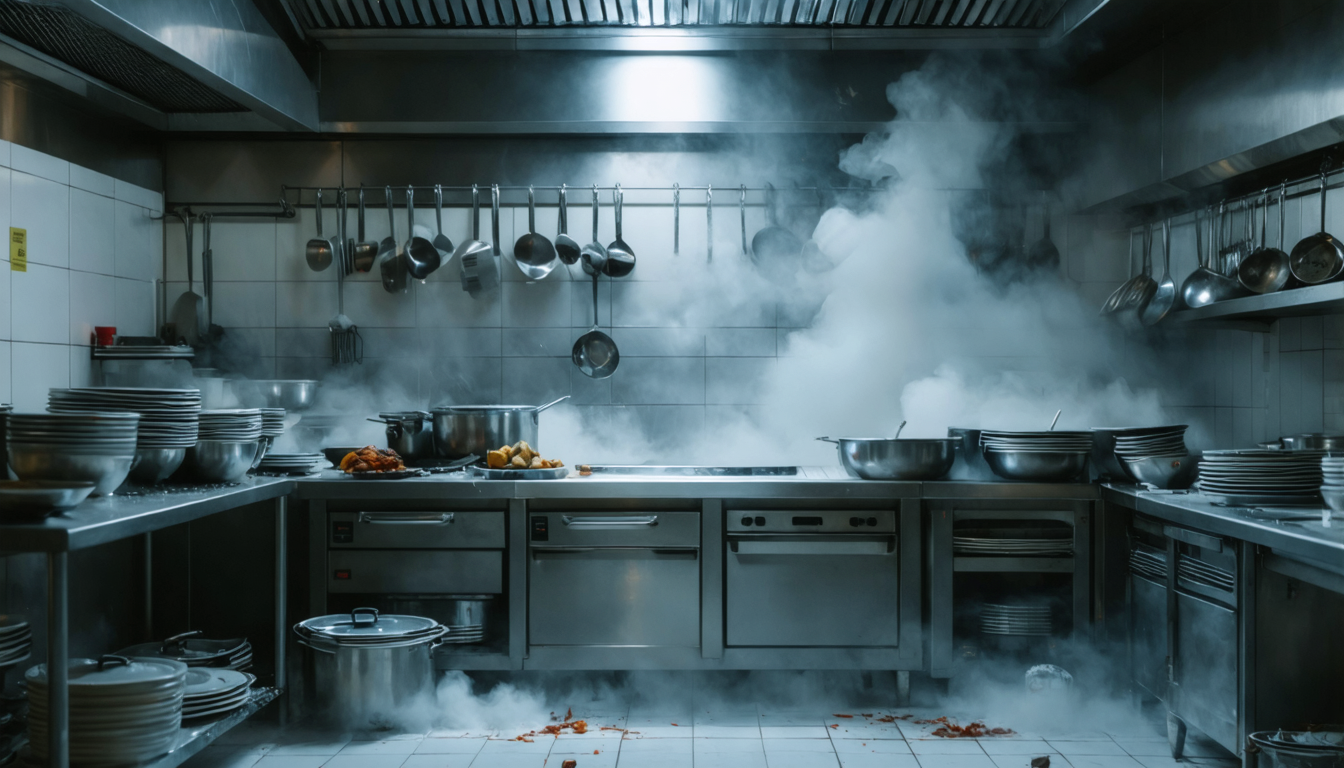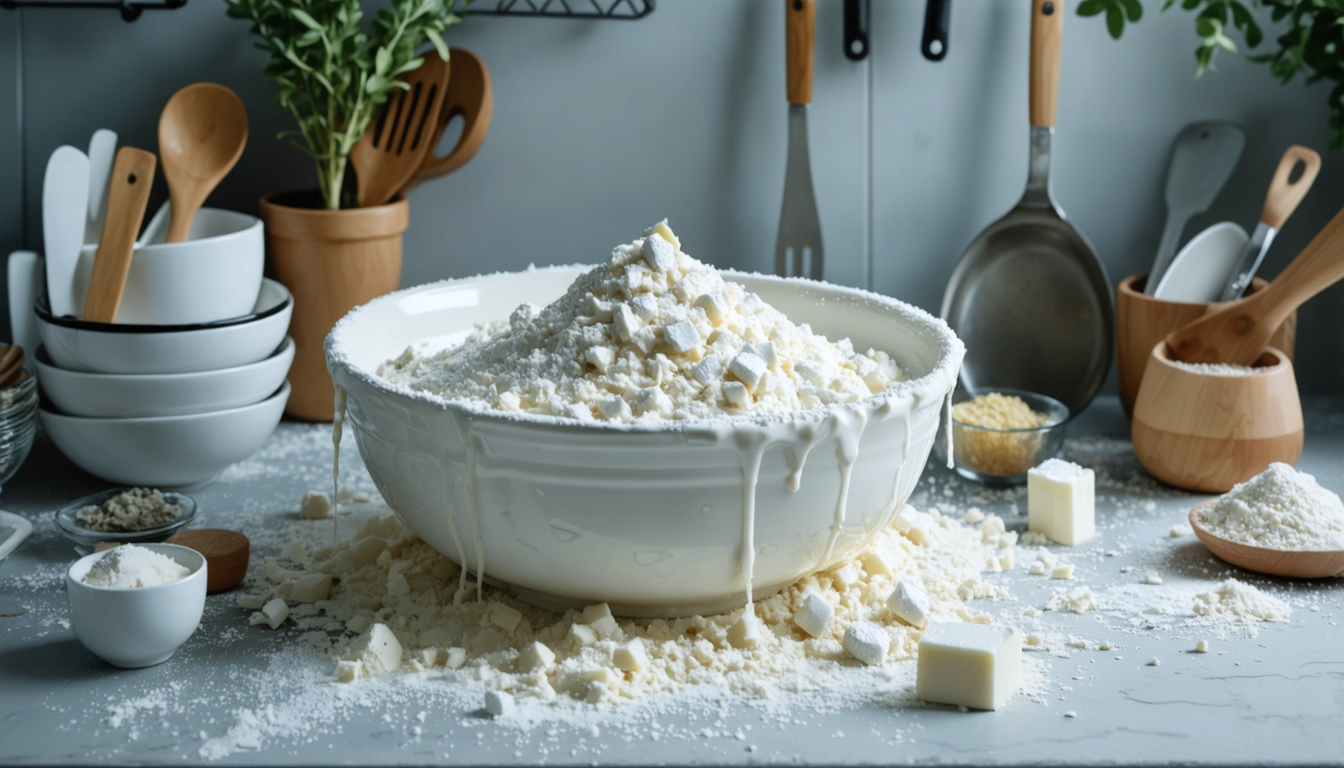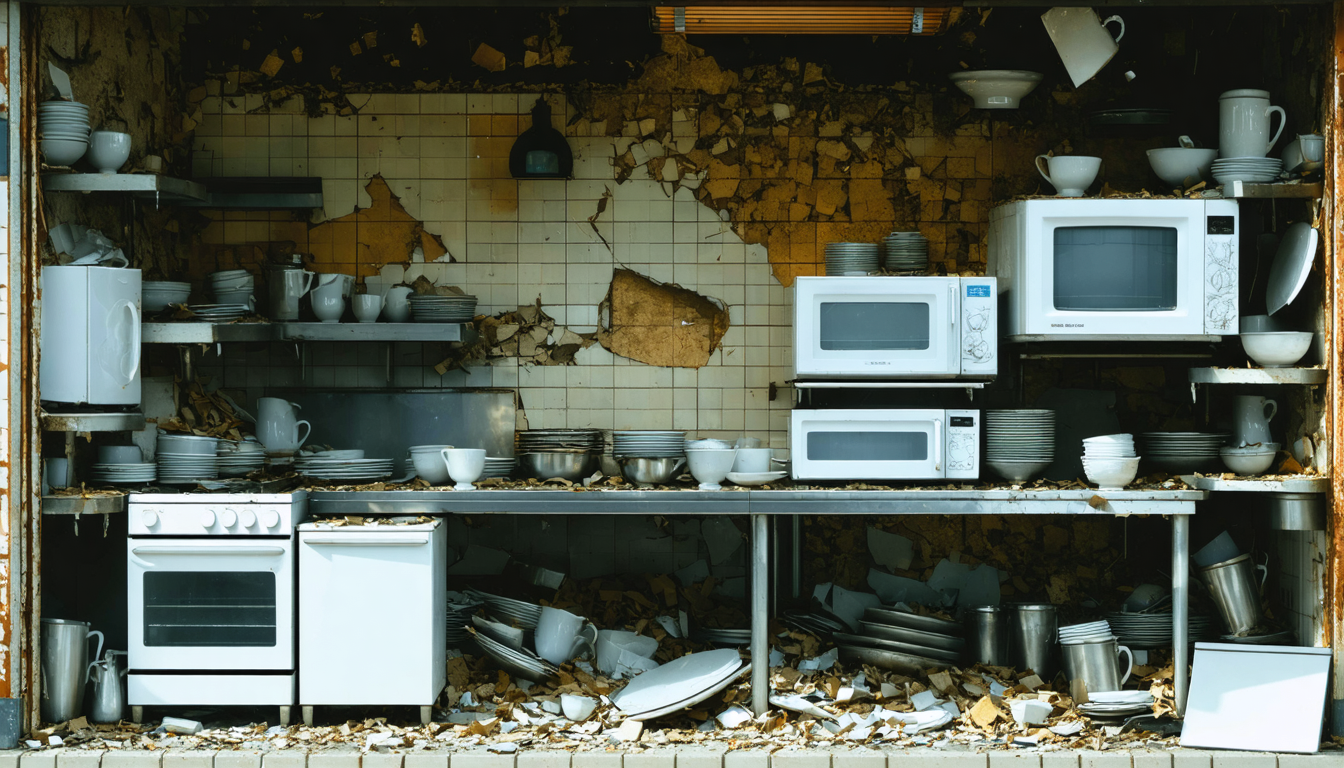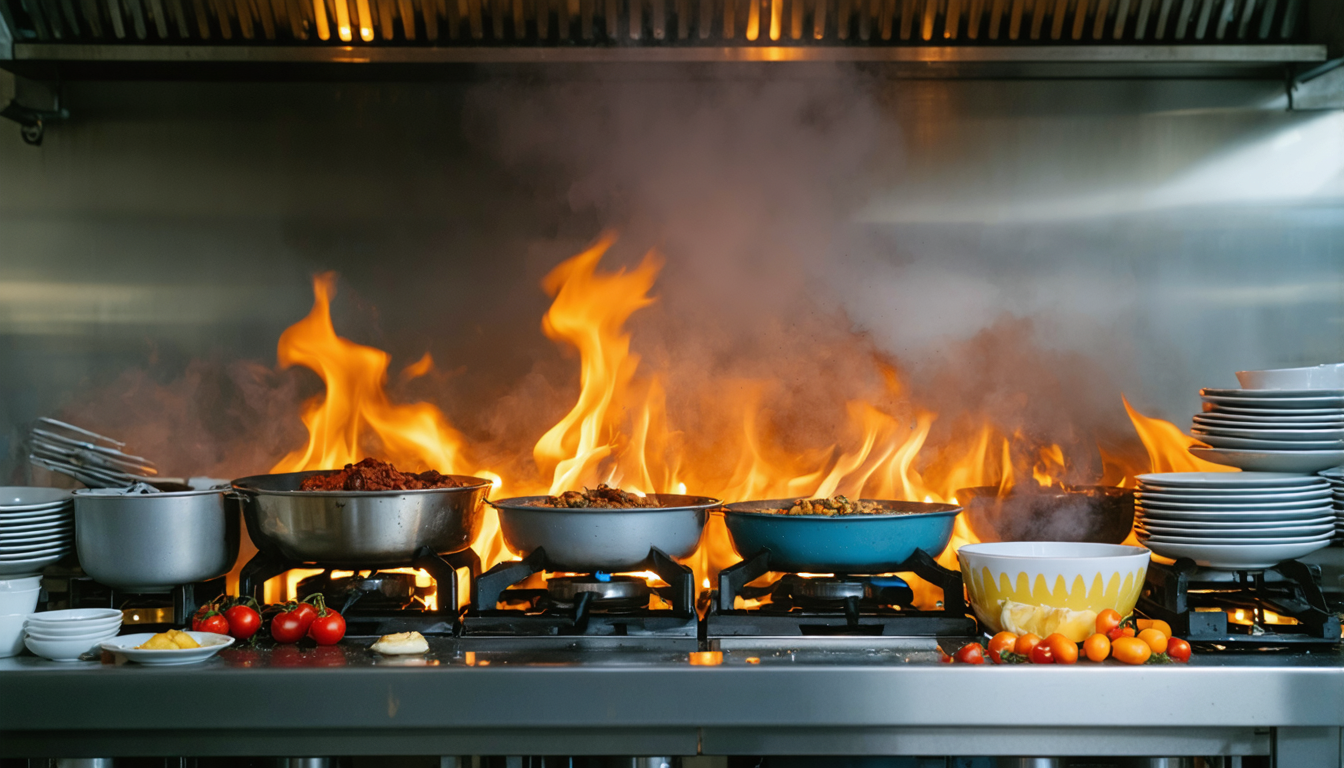- Understanding Restaurant Equipment and Food Spoilage Risks
- Why Equipment Breakdown Coverage Is Crucial
- The Impact of Equipment Failure on Restaurant Operations
- What Food Spoilage Coverage Entails
- Key Factors Affecting Food Spoilage Claims
- How to Determine Your Restaurant’s Insurance Needs
- Integrating Equipment and Spoilage Coverage in Your Policy
- Real-World Scenarios and Lessons Learned
- Tips for Managing and Preventing Equipment Failures
- Steps to File a Coverage Claim Effectively
- Conclusion
1. Understanding Restaurant Equipment and Food Spoilage Risks
Running a restaurant means investing in top-quality equipment and ensuring your food is always fresh and safe. However, unexpected equipment malfunctions and unforeseen food spoilage can disrupt your operations, damage your reputation, and lead to significant financial losses.
Today’s competitive market requires restaurateurs to be proactive about understanding and managing these risks. A clear grasp of your equipment and food spoilage risks is the first step to protecting your restaurant and building a resilient business.

2. Why Equipment Breakdown Coverage Is Crucial
Your restaurant relies on several high-cost pieces of equipment – from ovens and refrigerators to dishwashers and HVAC systems. Any breakdown can cause a domino effect of issues: lost revenue, canceled reservations, and compromised food safety.
Equipment breakdown coverage is essential because it helps you manage unplanned expenses. With the proper policy, you can cover repair costs quickly, minimize downtime, and keep your kitchen running without costly delays.
This coverage not only protects your bottom line but also reinforces the reliability of your operations in the eyes of staff and customers alike.
3. The Impact of Equipment Failure on Restaurant Operations
When restaurant equipment fails, every aspect of your business can suffer. Imagine a commercial refrigerator malfunctioning during peak hours. Food spoilage could occur rapidly, forcing you to discard large amounts of inventory. The loss of a key appliance might result in temporary closure or reduced menu options until repairs are made.
In addition to financial setbacks, equipment breakdowns can tarnish your restaurant’s reputation. Regular service interruptions create uncertainty among diners and may lead to long-term customer loss. Addressing these potential pitfalls through coverage and maintenance routines is vital for achieving operational continuity and customer trust.

4. What Food Spoilage Coverage Entails
Food spoilage coverage is designed to safeguard restaurants against losses due to damaged or perishable food supplies. This particular type of coverage kicks in when events such as equipment breakdown, power outages, or even extreme weather conditions cause food waste.
With food spoilage insurance in place, you can recover some or all of the costs associated with ruined inventory. Policies typically cover damaged items up to a certain limit and may include compensation for lost revenue on items that had to be discarded. Essentially, food spoilage coverage acts as a safety net, ensuring that one unexpected incident does not derail your entire operation.
5. Key Factors Affecting Food Spoilage Claims
Several factors come into play when you file a food spoilage claim. First, the cause of spoilage must be clearly documented. Since most policies exclude preventable issues resulting from poor maintenance or operator error, it’s important to maintain a routine maintenance schedule for your equipment. Second, the duration of the incident is critical.
The longer the food is exposed to unsafe conditions, the higher the likelihood of extensive spoilage and a more complex claim process. Third, policy limits and deductibles will define how much compensation you receive. Make sure you regularly review your policy to understand these limitations clearly.
Being proactive and thorough in your documentation will save your business precious time during claims processing.

6. How to Determine Your Restaurant’s Insurance Needs
Each restaurant faces unique challenges that depend on size, menu offerings, location, and the type of equipment used in daily operations. To assess your insurance needs, start by taking a detailed inventory of all your equipment and their maintenance histories. Identify the most critical systems that would cause significant interruptions if they failed.
Analyze past incidents and review industry data to predict future risks. Consult with a trusted insurance agent or broker who specializes in hospitality to understand the gaps in your current coverage. Consider combining general property insurance with specialized equipment breakdown and food spoilage riders to build a comprehensive plan.
Tailoring your policy not only protects your assets but also gives you the flexibility to address industry-specific issues before they escalate.
7. Integrating Equipment and Spoilage Coverage in Your Policy
Integrating equipment breakdown and food spoilage coverage into one robust policy ensures that your restaurant can withstand various risks. Often, these risks are interconnected. A malfunctioning refrigerator, for example, can lead to food spoilage. By combining coverage, insurance companies may offer more favorable terms or discounts.
Review your policy documentation to understand exactly what each element covers. Some policies may offer business interruption coverage that compensates for lost revenue during repairs or when ingredients cannot be used. Informed decisions mean being aware of any exclusions or limitations inherent in your plan.
An integrated policy simplifies claims processing and helps you manage risks holistically, allowing you to focus on running your restaurant rather than worrying about potential pitfalls.
8. Real-World Scenarios and Lessons Learned
Learning from real-world scenarios can provide valuable insights into the importance of having the right insurance coverage. Consider the case of a busy downtown bistro that experienced a sudden HVAC failure during a heatwave. The cooling failure led to an unexpected power surge that damaged several refrigeration units, resulting in widespread food spoilage.
Thanks to well-integrated coverage, the bistro was able to secure compensation for both equipment repair and perishable losses. In another instance, a family-owned diner experienced a gas leak that caused their cooking equipment to shut down unexpectedly.
Due to a limited policy that did not integrate breakdown and spoilage coverage, the diner faced significant losses and a lengthy downtime period. These examples stress the need not only for a robust insurance plan but also for regular equipment maintenance and employee training to minimize risk.

9. Tips for Managing and Preventing Equipment Failures
While insurance safeguards your restaurant financially, proactive equipment management can help prevent failures in the first place. Establish a regular maintenance schedule for all critical systems, and use checklists to ensure routine inspections.
Train your staff on proper usage and emergency response in case of equipment malfunction. Invest in quality service contracts that include routine checks and prompt repairs. In addition, embrace technology by installing remote monitoring systems that can alert you to potential green flags before a catastrophic failure occurs. These proactive measures not only extend the life of your assets but also help you maintain a safe and efficient environment for both customers and employees.
Prevention is always more cost-effective than remediation, reinforcing the importance of maintaining your equipment and being well-acquainted with its operating procedures.
10. Steps to File a Coverage Claim Effectively
Should an equipment failure or food spoilage event occur, filing a claim effectively can make a significant difference in your recovery time. First, act promptly by documenting the incident with as much detail as possible. Take photographs, record maintenance logs, and obtain statements from staff.
Contact your insurance provider immediately to report the incident and outline the events leading up to the disruption. Provide a detailed inventory of the lost or damaged items and seek professional assessments if needed. Follow all policy guidelines closely, as any deviation could delay the claim process. Keep records of all communications and ensure that you update your insurance agent regularly.
By being organized and proactive, you make the claims process smoother and increase your chances of a fair and prompt settlement.
Conclusion
As a restaurant owner, understanding the interplay between equipment reliability and food safety is paramount. Strategic insurance coverage tailored to your specific needs not only protects your business but also boosts customer confidence. Each step—from evaluating risks to filing effective claims—contributes to a safer and more resilient environment.
By integrating equipment breakdown coverage with food spoilage policies, you build a safety net that covers both the equipment you depend on and the perishable items that form the heart of your menu. Constant vigilance, regular equipment maintenance, staff training, and a thorough review of your insurance coverage all form a holistic approach to risk management.
Adapting to the evolving demands of the restaurant industry requires both proactive measures and reactive support systems. With the right policies in place, you ensure that your restaurant remains a steady, trustworthy business even during unforeseen challenges.
